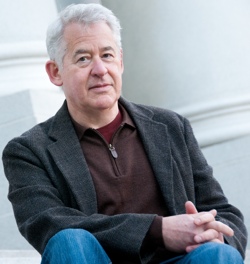Hemingway used to say that writing journalism was good training for novelists. He felt it pared down a writer’s stylistic excesses, privileged clarity and economy over all other virtues. Of course, journalism was a respectable sort of apprenticeship in those days; a good many of America’s 20th century playwrights and novelists had been reporters before turning to fiction.
Screenwriting doesn’t enjoy comparable prestige. The director, to a large degree unfairly, is viewed as the author of a film by the public as well as the critical fraternity. The production of a script is generally seen as a kind of filling-in-the-dots of the director’s vision, even though, with rare exceptions, this notion bears no relation to reality. (I wrote about the issue in Slate a few years ago.) There’s a story, probably apocryphal, that screenwriter Robert Riskin, finally fed up with all the praise heaped upon his directing collaborator Frank Capra, once handed him a sheaf of blank pages and said, “There! Go ahead! Let’s see you give this the famous Capra touch!”
When I was young, it wasn’t my intention to write for movies and TV, although that ended up constituting the bulk of my work for several decades. I wanted to write novels. I enjoyed reading them more than I enjoyed watching movies. Screenwriting was something I more or less fell into; since people were willing to pay me to keep doing it, I kept doing it. Still, there were lessons I learned during those days that have served me well as a writer of fiction.
Not, as you might think, lessons about how to write dialogue. Dialogue in movies and television is peculiar to the medium, and very stylized. We don’t often notice, so used to it have we become; its artifice is built into our expectations. But people in movies don’t talk the way people do in life. I learned more about writing naturalistic dialogue — about using my ear to catch the rhythm of actual spoken speech — from writers like J. D. Salinger and John Updike and Philip Roth.
Nor about characterization; in film, actors do a lot of your characterizing work for you. No screenwriter has to — or even has room to — work the magic of, say, a Dickens or a Tolstoy in the pages of a script. That act of prestidigitation — of making you think you’re encountering someone real when he or she consists solely of words on a page — is what good novelists do.
But there is something good novelists used to do and often don’t do anymore, something that indeed is scorned by many contemporary literary types, writers and critics alike. But it’s something that’s still required in television and movies, at least mainstream movies. And, very simply, it’s to tell a good story. To tell a story that begins in one place and winds its way through a variety of vicissitudes, thereby taking one to another place, a place that resolves issues raised by the place it began. Much modern literary fiction consists entirely of an elongated version of what used to be considered — using theater terminology — a first act, an examination of a protagonist’s troubled situation. Many novels today extend that first act to full-length, presenting the conditions of the protagonist’s life and doing nothing much to change it. Some of this writing is very good, as goes without saying, and has virtues that more than compensate for the lack of story. But I do nevertheless feel that lack as a lack. I often find myself dissatisfied with the absence of a through-line, of a succession of proleptic incidents leading ineluctably to a conclusion. The absence of what Leopold Mozart, the composer’s father, used to refer to as “il filo,” the thread, the thing that carries you from the beginning to the end.
That sort of construction is difficult. For many of us, its architecture is the most difficult aspect of writing an extended work of fiction. Which is the reason why you often hear the phrase “second act problems” when writers are discussing their work-in-progress. Conscientious plotting is still a key ingredient in genre fiction, of course. You can’t have a piece of crime fiction without a crime committed at the beginning and the culprit discovered and punished at the end. You need it in romance fiction and spy fiction. But in literary fiction, it’s become increasingly rare. As if it is a childish luxury that detracts from a work’s seriousness.
I disagree. Writing television and movies, I came to believe that a well-constructed plot isn’t some obsolete excrescence from an earlier era of storytelling; to my mind, it’s at the heart of the narrative impulse. “And then what happened?” is the question readers should always be asking, whether they’re reading Agatha Christie or Fyodor Dostoyevsky. And when they shut the book for the last time, it should be with a sigh of contentment.
Tags: fiction Frank Capra Hemingway JD Salinger John Updike movies Philip Roth screenwriting story tv









0 Comment